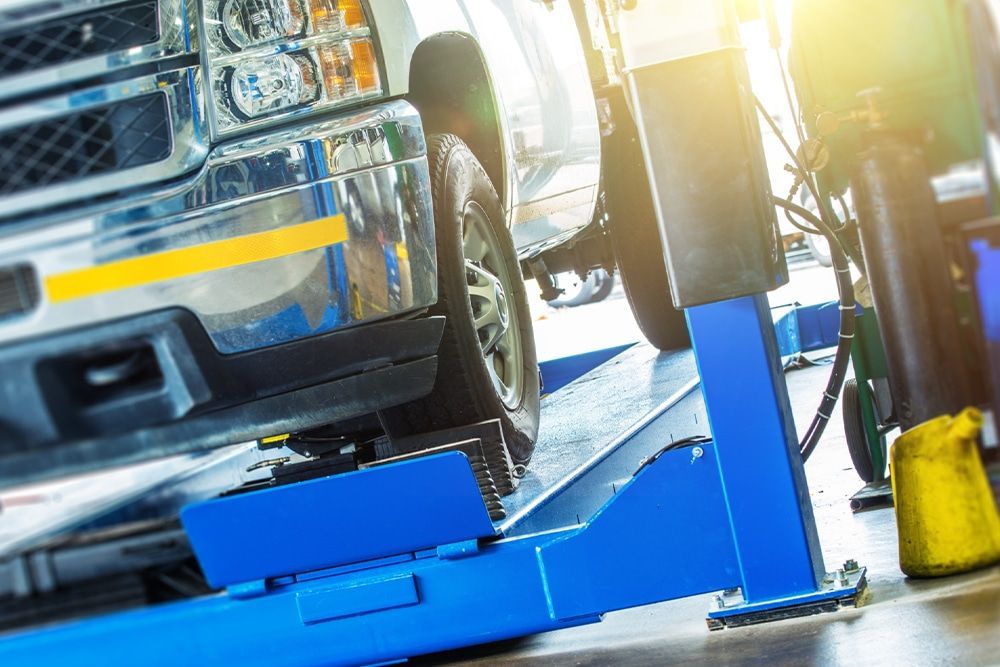What is Front-Wheel Drive (FWD)?
In front-wheel-drive vehicles
, the engine powers the front wheels. This setup is popular in many modern cars and is designed with practicality and everyday driving in mind. Here’s a closer look at the benefits and drawbacks of front-wheel drive.
Pros of Front-Wheel Drive
1. Better Traction in Poor Weather
One of the main benefits of front-wheel drive
is improved traction in poor weather conditions
, such as rain, snow, or ice. Since the engine’s weight is over the front tires, FWD vehicles tend to grip the road better, which is especially important here in Michigan, where winters can be harsh.
2. More Fuel-Efficient
Because FWD systems are generally lighter and simpler, vehicles with this setup tend to be more fuel-efficient. With fewer parts involved in the drivetrain, less energy is required to move the vehicle, meaning you’ll save money at the gas pump.
3. Cost-Effective to Manufacture and Maintain
FWD vehicles are often more affordable than RWD vehicles. The simpler design means there are fewer parts to repair or maintain, which can lead to lower maintenance costs over the life of the vehicle. At Hemlock Auto & Alignment
, our drivetrain services
for FWD vehicles are efficient and budget-friendly, ensuring you get great service without breaking the bank.
Cons of Front-Wheel Drive
1. Reduced Performance for Enthusiasts
While FWD systems are practical, they don’t always deliver the best performance for those who enjoy a more spirited driving experience. FWD cars tend to understeer, especially during aggressive cornering, making them less ideal for performance-focused drivers.
2. Limited Power Handling
FWD vehicles typically struggle with higher horsepower. As more power is sent to the front wheels, you might notice torque steer—where the car pulls to one side under hard acceleration. This can be a disadvantage if you’re driving a high-performance vehicle.
What is Rear-Wheel Drive (RWD)?
In rear-wheel-drive vehicles
, power is sent to the rear wheels. This setup is commonly found in trucks, sports cars, and high-performance vehicles. While RWD vehicles
can provide a more dynamic driving experience, they also come with their own set of challenges.
Pros of Rear-Wheel Drive
1. Superior Handling and Balance
One of the biggest advantages of rear-wheel drive
is improved handling and balance. With the power sent to the rear wheels and the front wheels left to manage steering, the weight distribution is more even, which enhances the overall driving experience. This is why many performance vehicles and sports cars opt for RWD.
2. Better Acceleration
RWD vehicles generally handle higher horsepower better than FWD vehicles. When you accelerate, the weight shifts to the rear, giving the rear wheels
more traction and allowing for faster, smoother acceleration.
3. Ideal for Towing and Heavy Loads
Trucks and SUVs with RWD are typically better suited for towing and handling heavy loads. The drivetrain is designed to manage the additional weight, making it a good choice for drivers who need their vehicles for work or hauling.
Cons of Rear-Wheel Drive
1. Poor Traction in Bad Weather
While RWD vehicles perform well in dry conditions, they can struggle in poor weather. With the engine’s weight positioned at the front, the rear wheels
have less grip, which can lead to skidding or loss of control in wet or icy conditions. If you drive a RWD vehicle
in Michigan winters, you may need to take extra precautions.
2. Higher Maintenance Costs
RWD systems are typically more complex, with additional parts like the driveshaft and differential. This complexity can lead to higher maintenance and repair costs. However, at Hemlock Auto & Alignment
, we offer expert drivetrain services
for RWD vehicles, ensuring your system stays in top shape.
Contact Us to Learn Which Drivetrain Is Best for You
Still unsure whether front-wheel drive
or rear-wheel drive
is the right choice for your vehicle? At Hemlock Auto & Alignment
, we’re here to help! Our team of experts can provide personalized advice based on your driving needs and conditions. Contact us today at 989-642-4423
or visit us at 16575 Gratiot Road, Hemlock, MI 48626
. Let us help you make the best decision for your vehicle’s performance and safety. You can also visit hemlockauto.com
to schedule a consultation or service appointment.












